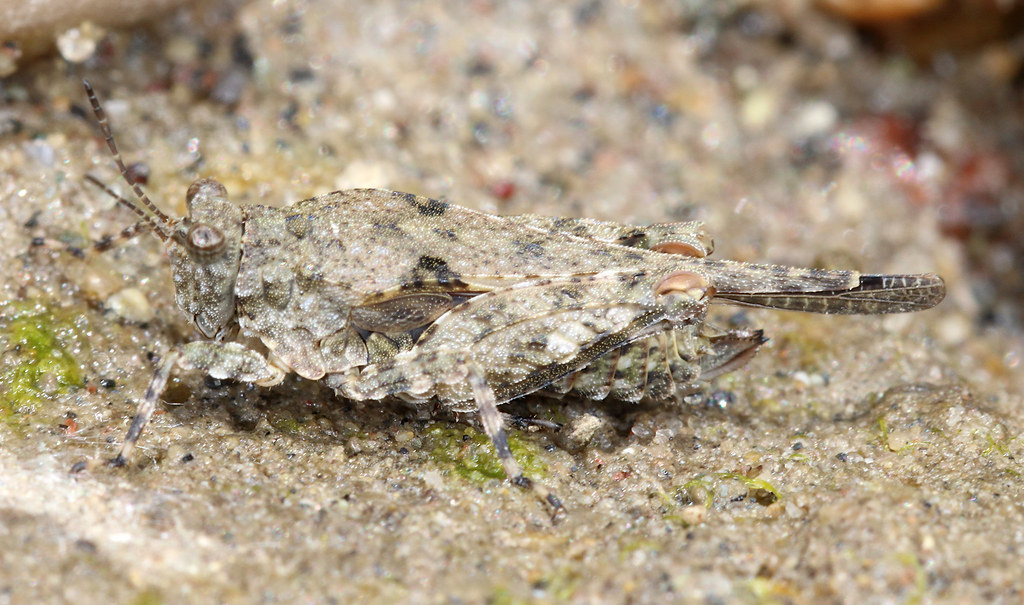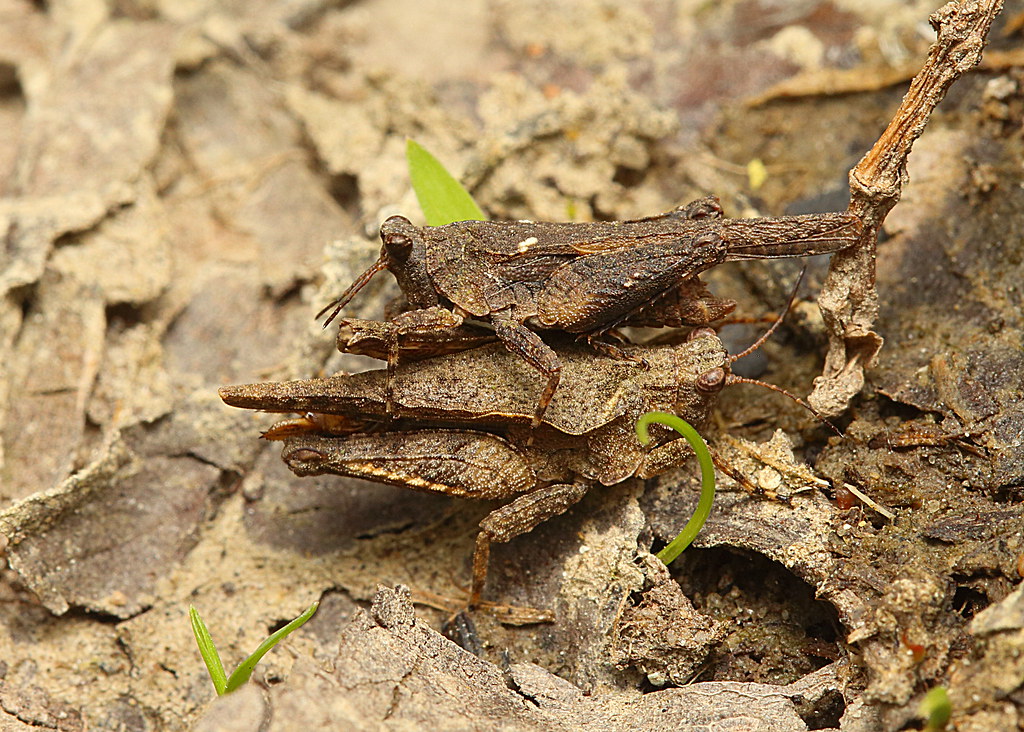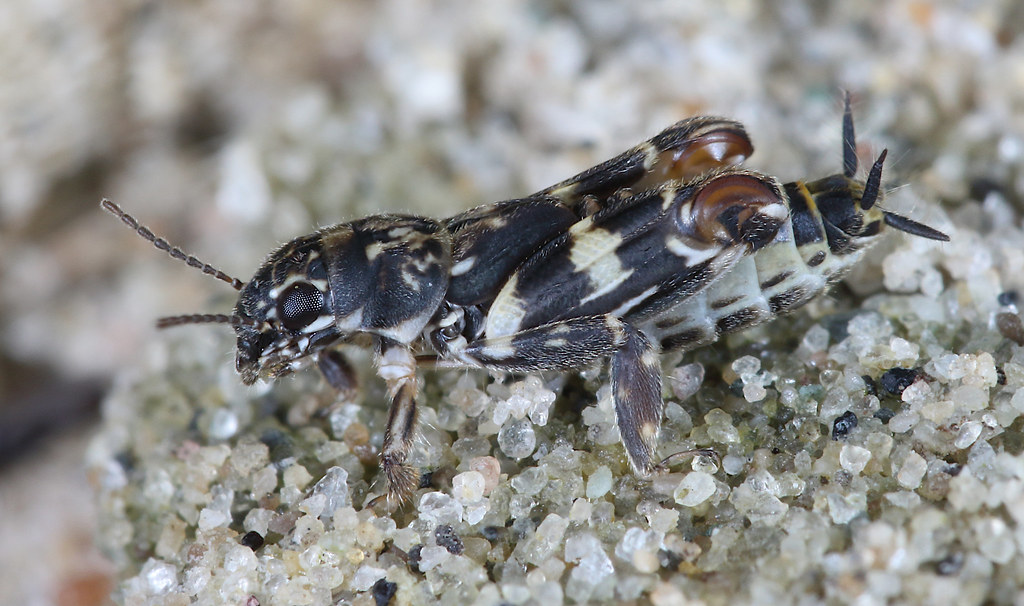First up are so-called pygmy grasshoppers, which are odd little grasshoppers that grow to about a cm long as adults (!). A distinctive feature of grasshoppers in this group is the pronotum (the plate the normally covers the front segment of the thorax), as it is greatly extended to cover most of the body. The front wings are vestigial, and you can see them just above the middle legs. I currently think that ALL of the pygmy grasshoppers shown here are Tetrix arenosa. Color patterns in pygmy grasshoppers are rather variable, so identifying them can be challenging.
 Pygmy grasshopper by Mark Sturtevant, on Flickr
Pygmy grasshopper by Mark Sturtevant, on Flickr  Pygmy grasshopper by Mark Sturtevant, on Flickr
Pygmy grasshopper by Mark Sturtevant, on FlickrI include here a much older picture of pygmy grasshoppers, mainly because I found it amusing. I was photographing the female (the larger one) when I noticed a small 'dirt clod' creeping up on her. This was a male. He would repeatedly jump onto her, only to be quickly kicked off. Here he had once again succeeded in mounting the female, only something seems wrong...
 Mating (?!) pygmy grasshoppers by Mark Sturtevant, on Flickr
Mating (?!) pygmy grasshoppers by Mark Sturtevant, on FlickrThe next pictures are of another Orthopteran that is common along rivers. This cute little thing is a pygmy mole cricket (Ellipes minuta). Pygmy mole crickets are a taxonomic surprise since they are no longer considered true crickets, let alone 'mole' crickets. Instead, they are currently classified with grasshoppers (!) because of the length of their antennae, the form of the ovipositor, and I don't know what else. There were dozens of these little insects hopping around the grass near a local river, and at first I thought they were plant hoppers until I looked more closely. A feature that I would like to see are their hind tibia, since they will have distinctly widened spurs on them. The spurs are described as being used to help them hop on water.
 Pygmy mole cricket by Mark Sturtevant, on Flickr
Pygmy mole cricket by Mark Sturtevant, on Flickr Pygmy mole cricket by Mark Sturtevant, on Flickr
Pygmy mole cricket by Mark Sturtevant, on FlickrFinally, the odd insect shown in the picture below is 'toad bug'. Toad bugs are predatory Hemipterans, and like the grasshoppers shown above they can jump. This species is the big-eyed toad bug (Gelastocoris rotundatus)
 big-eyed toad bug by Mark Sturtevant, on Flickr.
big-eyed toad bug by Mark Sturtevant, on Flickr.